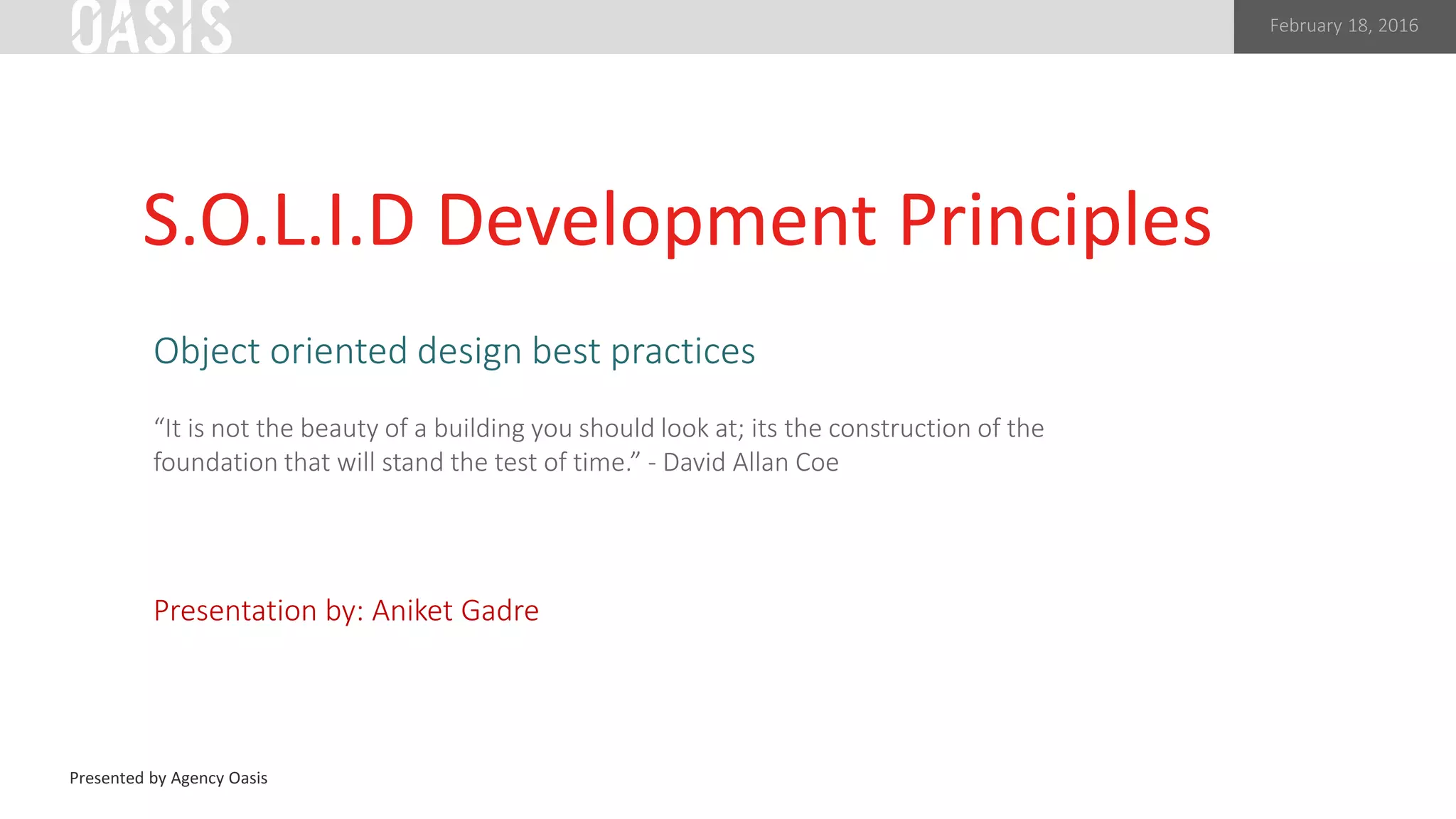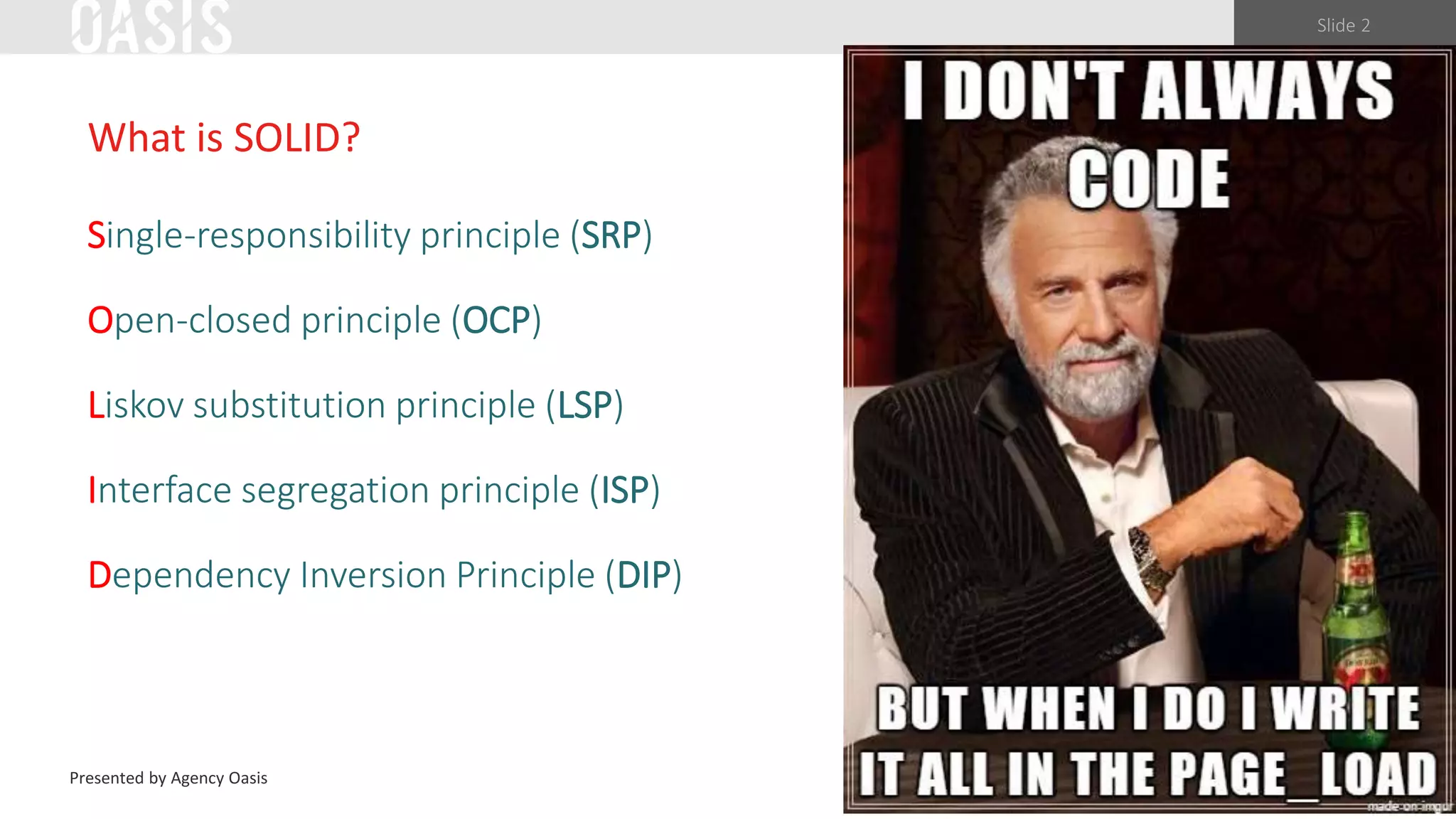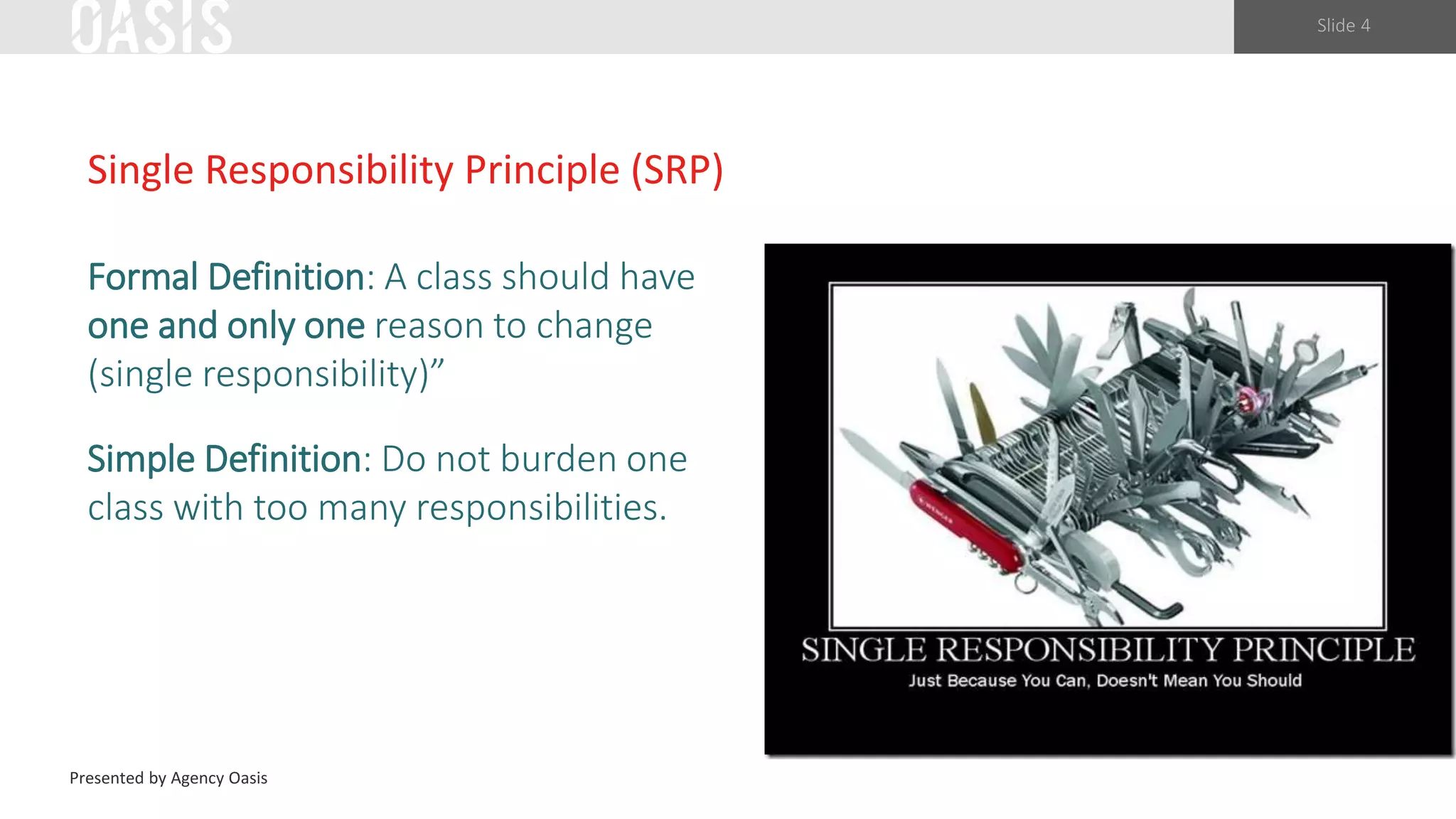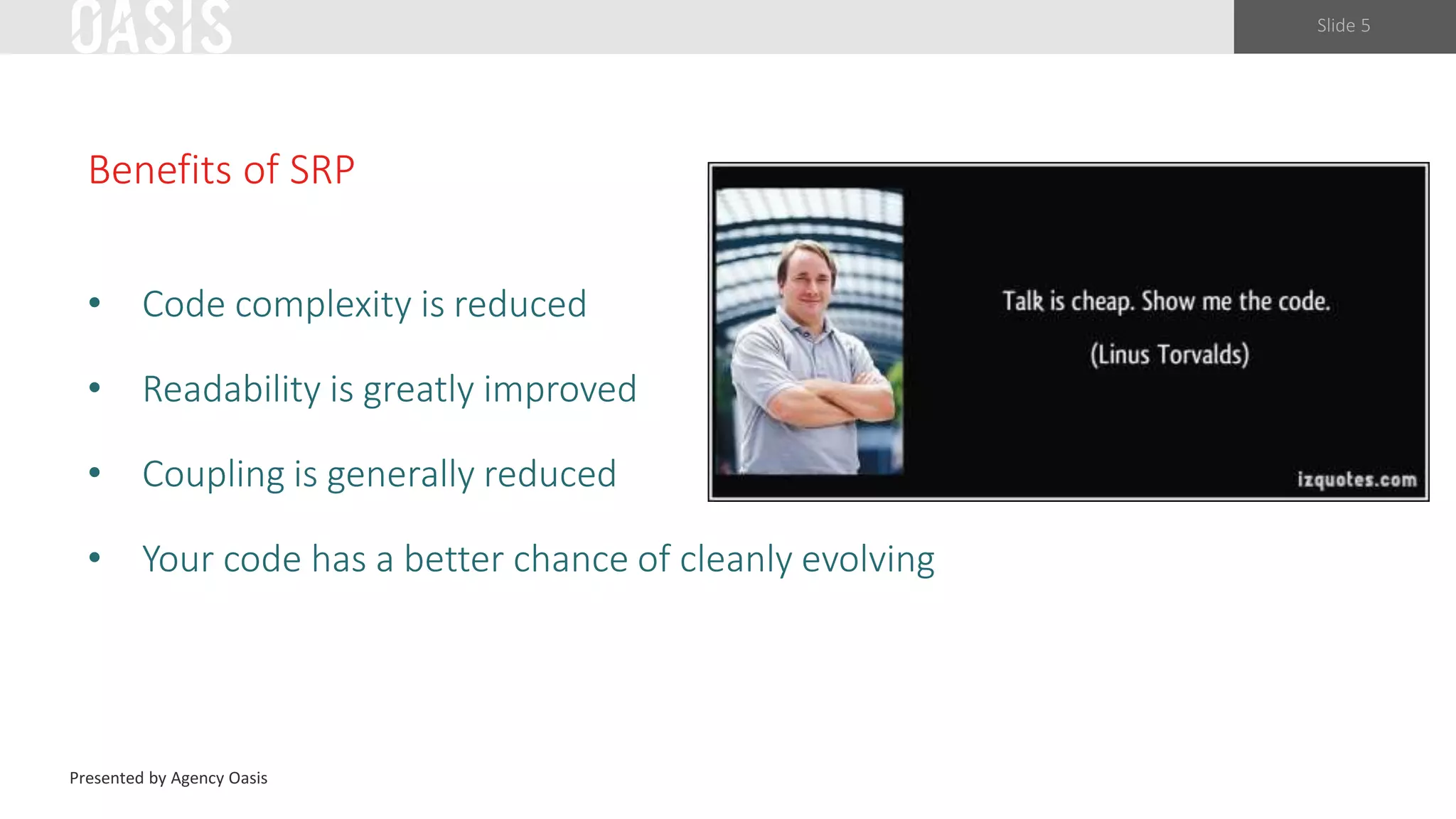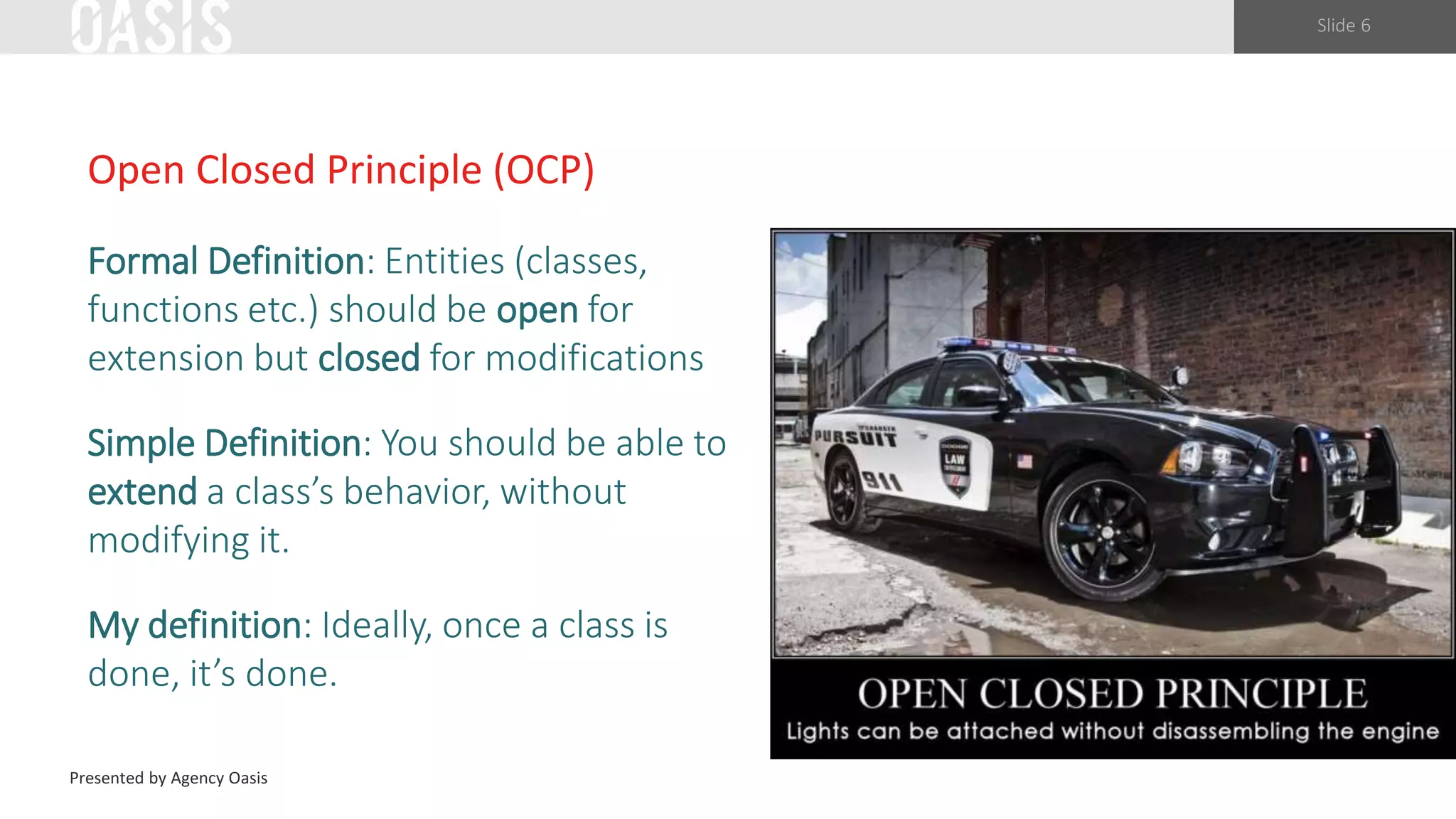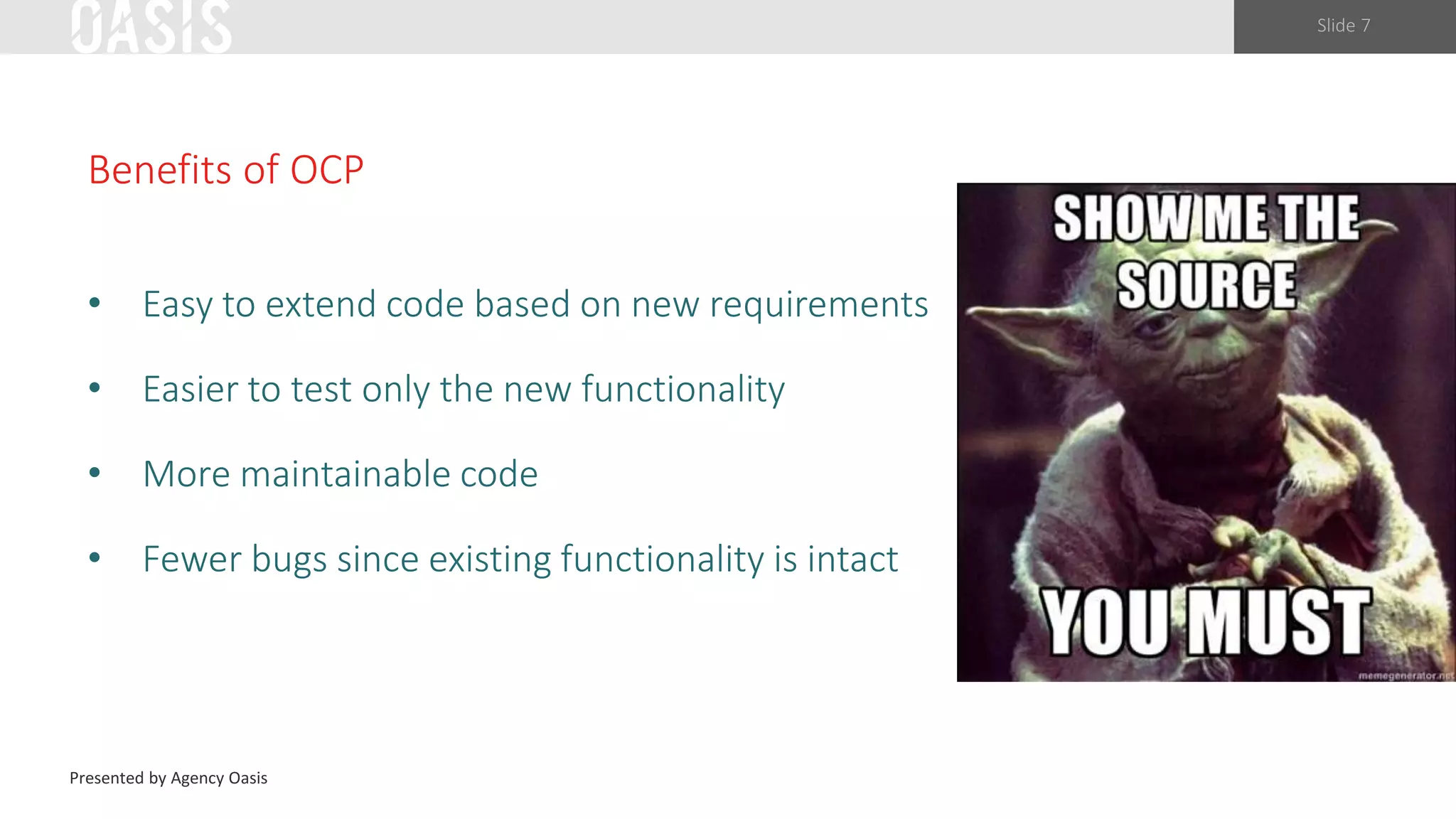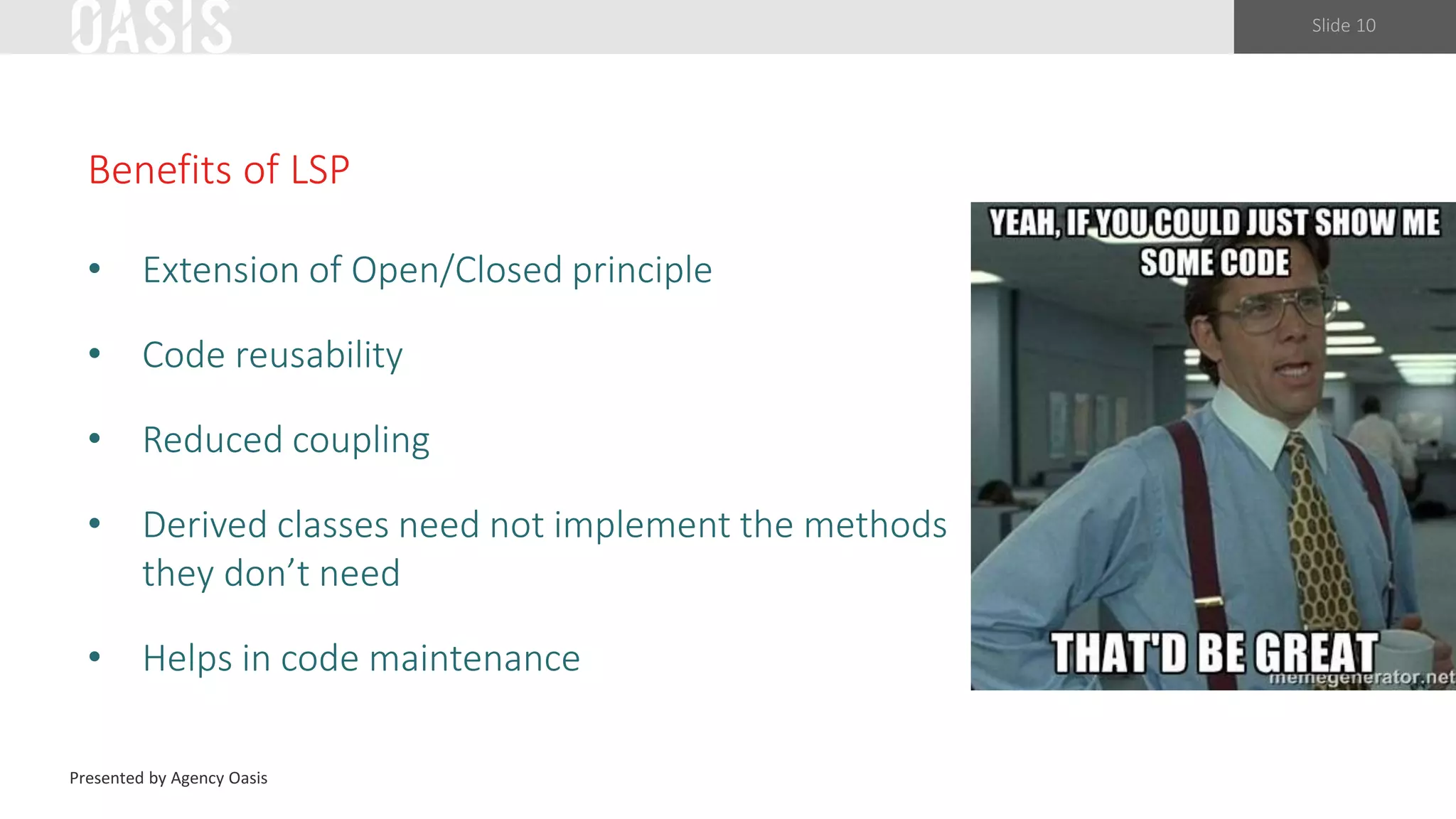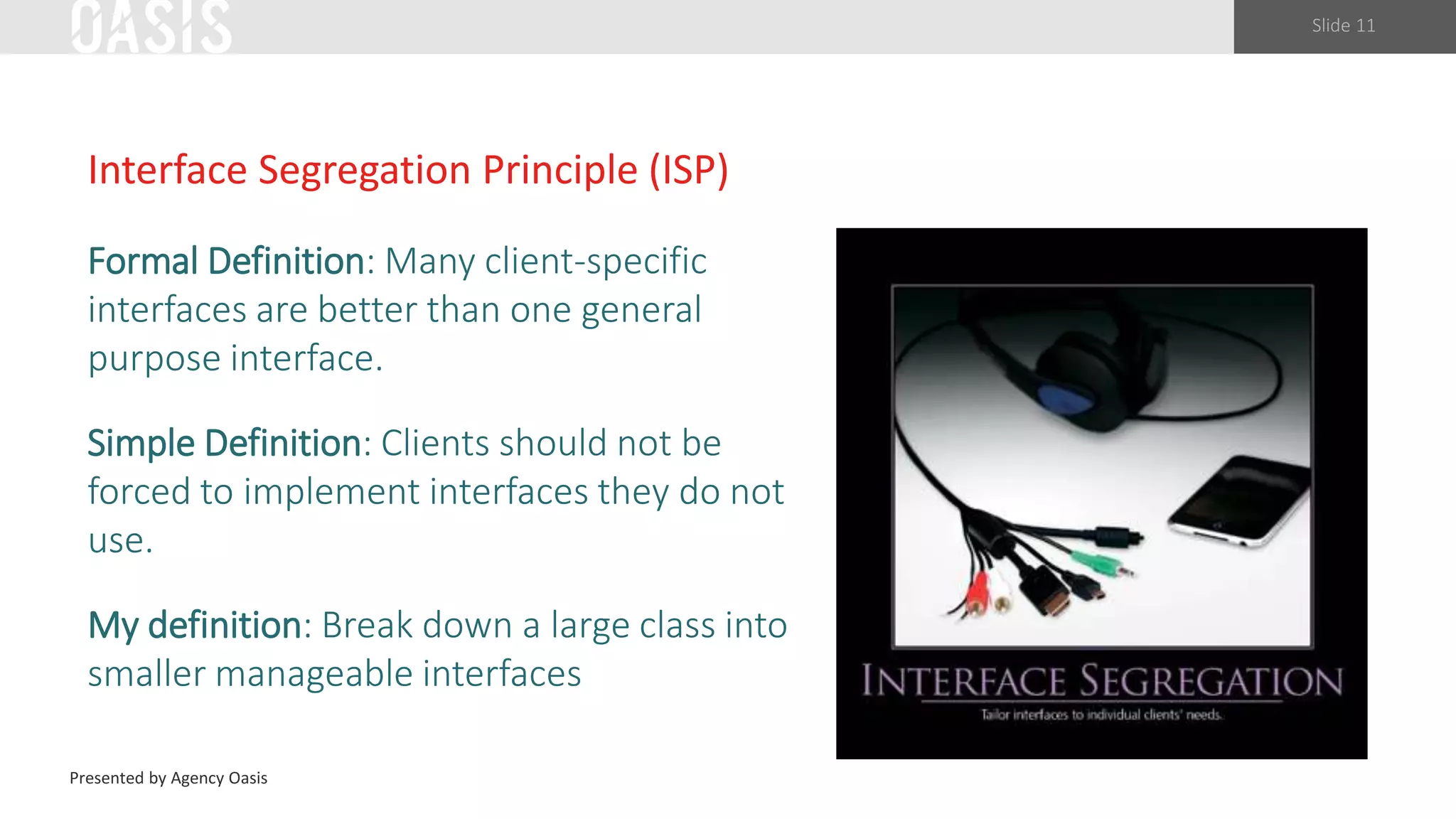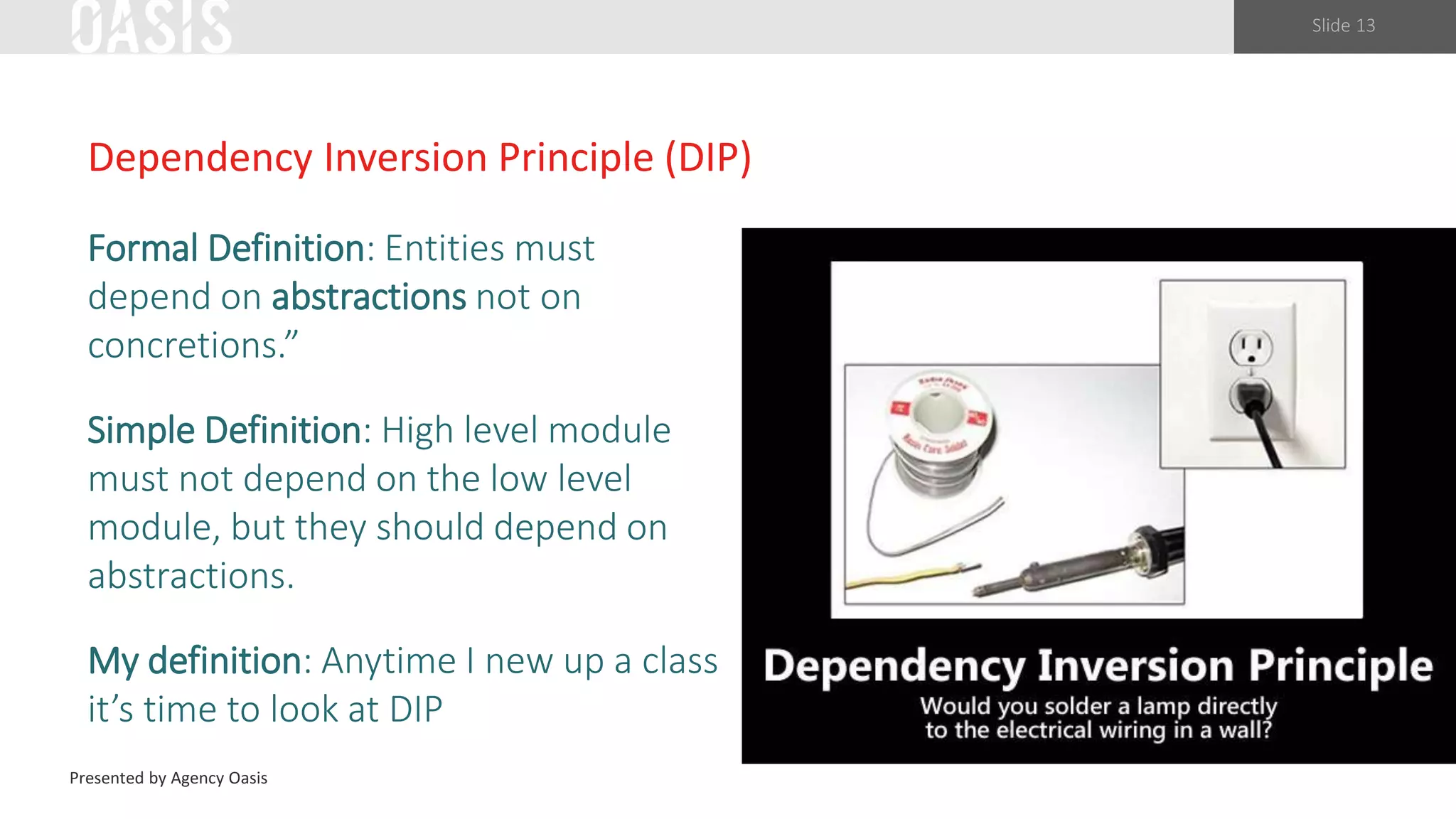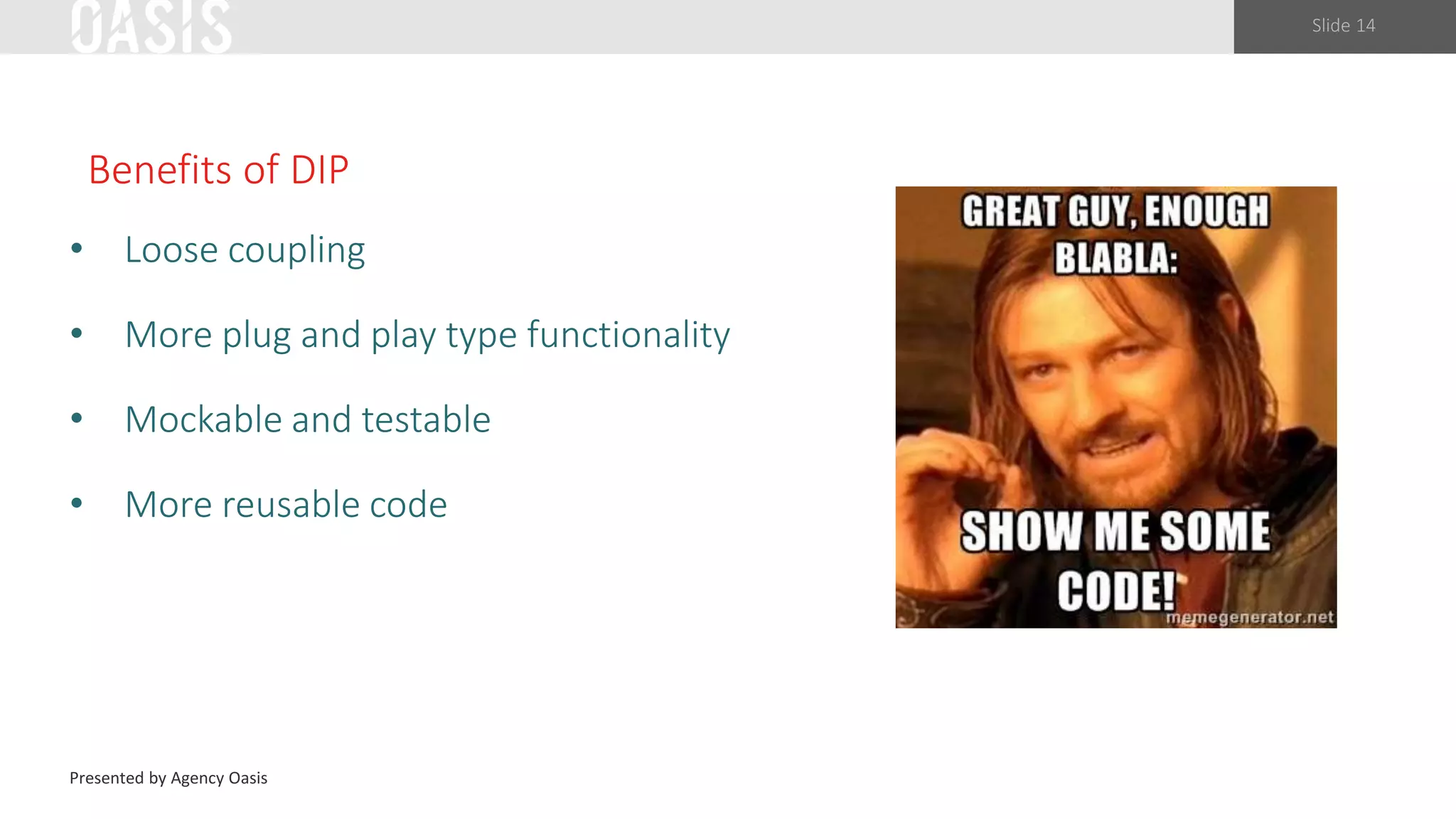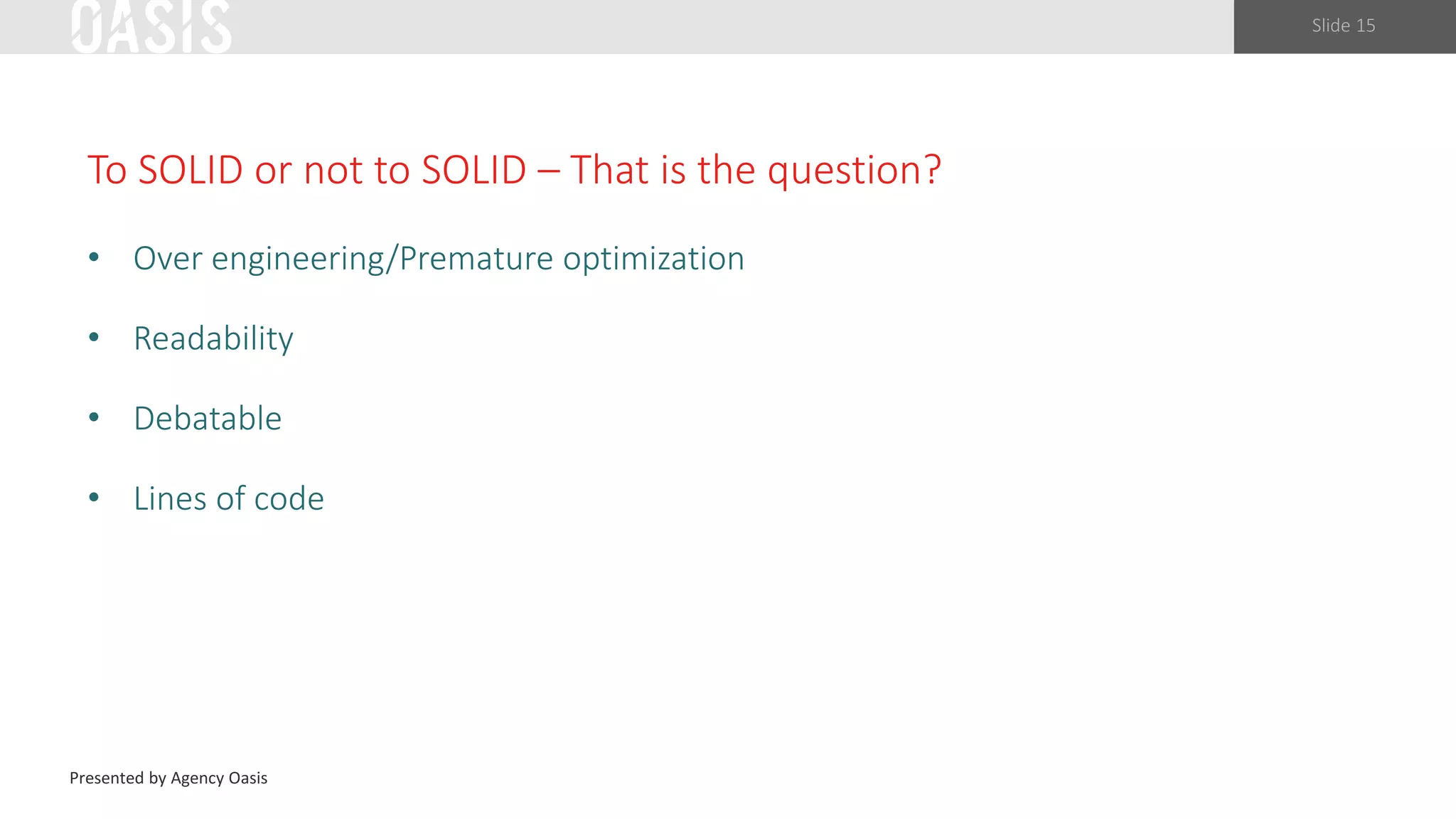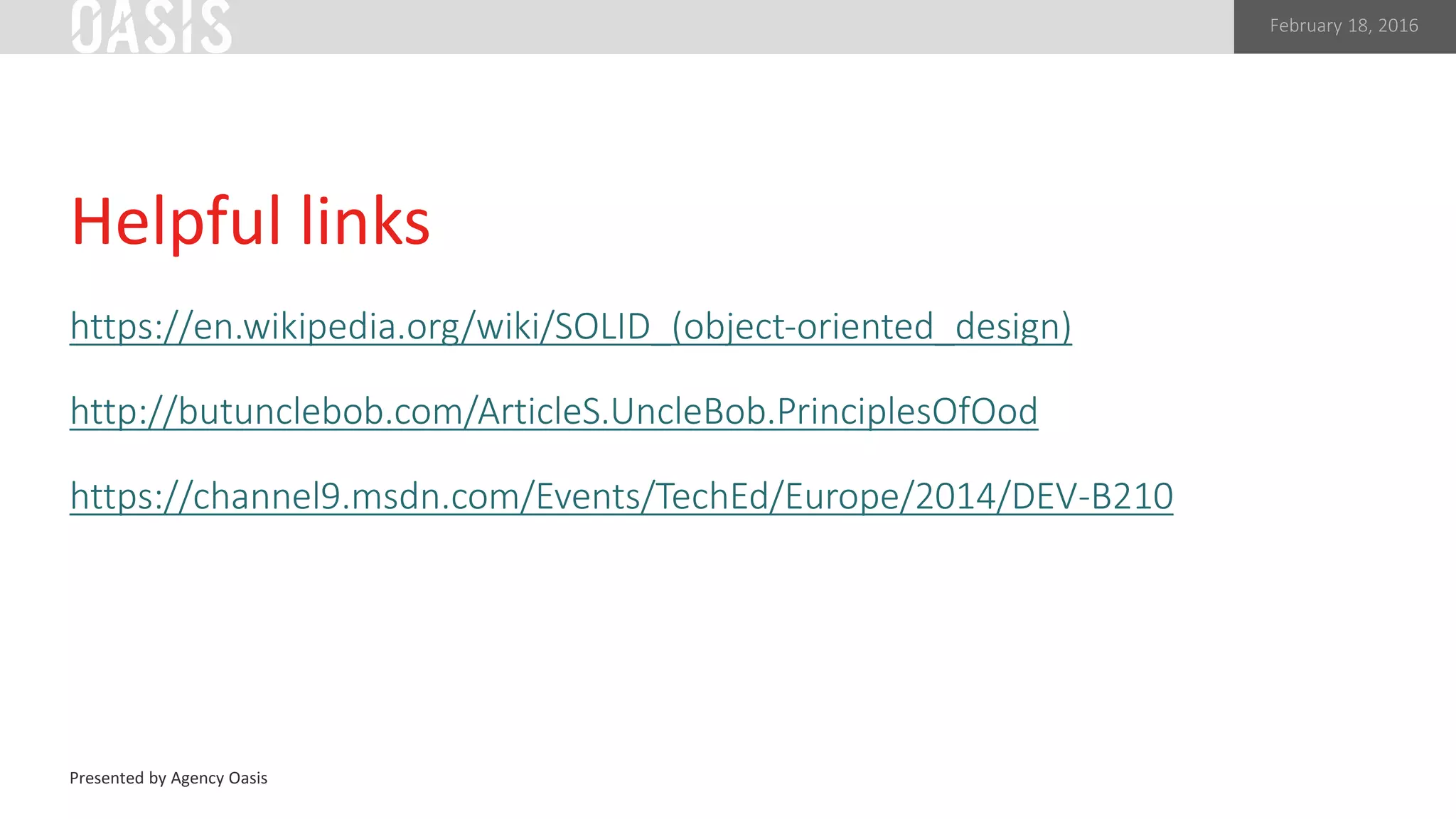This presentation discusses the SOLID principles of object-oriented design, which are a set of best practices for software engineering. The SOLID principles are: single-responsibility principle, open-closed principle, Liskov substitution principle, interface segregation principle, and dependency inversion principle. Adhering to these principles helps create code that is loosely coupled, highly cohesive, reusable, robust, flexible, testable and maintainable. The presentation defines each principle and discusses its benefits. It also raises questions about when and how to apply the SOLID principles without over-engineering.
